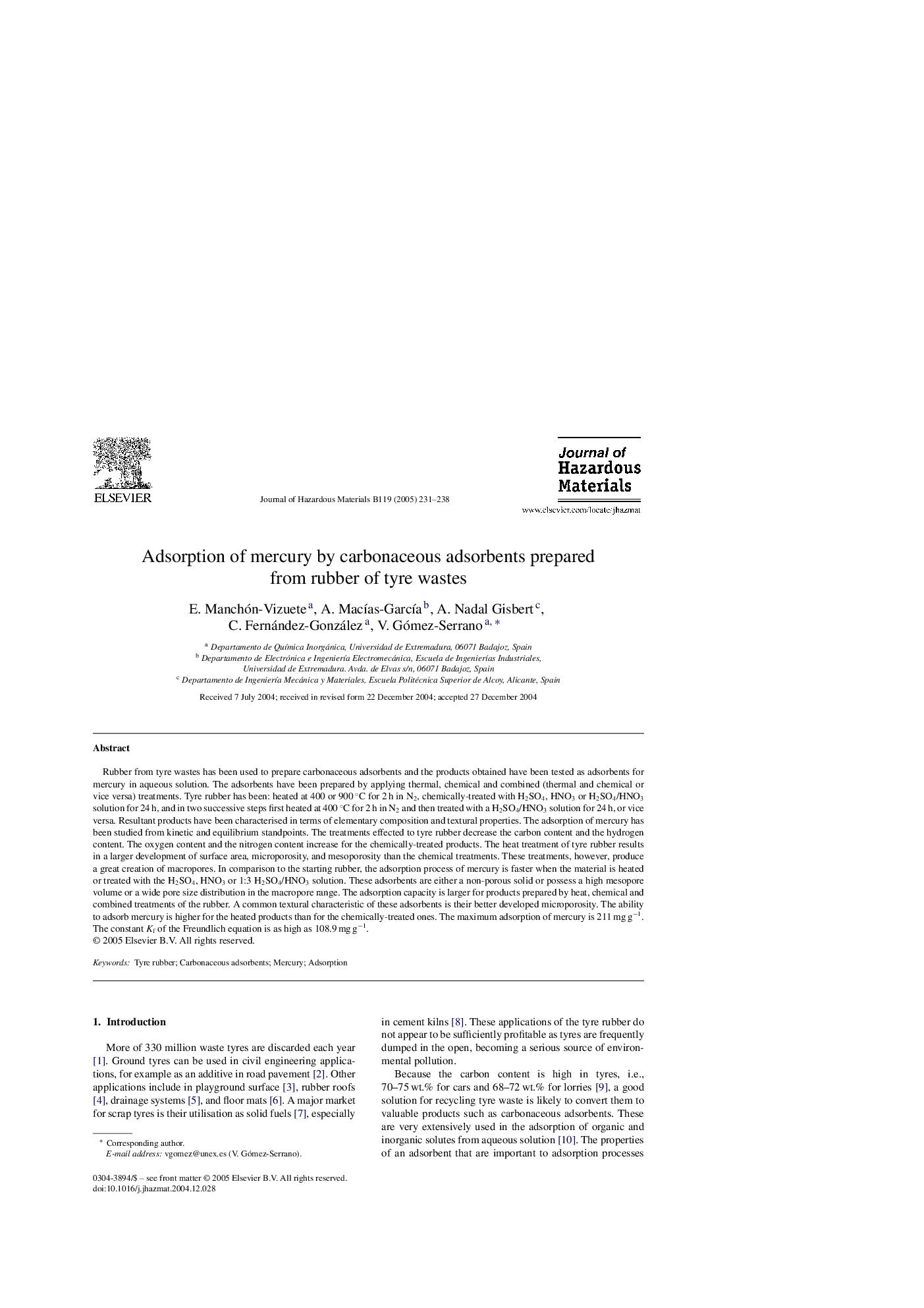| Article ID | Journal | Published Year | Pages | File Type |
|---|---|---|---|---|
| 9674362 | Journal of Hazardous Materials | 2005 | 8 Pages |
Abstract
Rubber from tyre wastes has been used to prepare carbonaceous adsorbents and the products obtained have been tested as adsorbents for mercury in aqueous solution. The adsorbents have been prepared by applying thermal, chemical and combined (thermal and chemical or vice versa) treatments. Tyre rubber has been: heated at 400 or 900 °C for 2 h in N2, chemically-treated with H2SO4, HNO3 or H2SO4/HNO3 solution for 24 h, and in two successive steps first heated at 400 °C for 2 h in N2 and then treated with a H2SO4/HNO3 solution for 24 h, or vice versa. Resultant products have been characterised in terms of elementary composition and textural properties. The adsorption of mercury has been studied from kinetic and equilibrium standpoints. The treatments effected to tyre rubber decrease the carbon content and the hydrogen content. The oxygen content and the nitrogen content increase for the chemically-treated products. The heat treatment of tyre rubber results in a larger development of surface area, microporosity, and mesoporosity than the chemical treatments. These treatments, however, produce a great creation of macropores. In comparison to the starting rubber, the adsorption process of mercury is faster when the material is heated or treated with the H2SO4, HNO3 or 1:3 H2SO4/HNO3 solution. These adsorbents are either a non-porous solid or possess a high mesopore volume or a wide pore size distribution in the macropore range. The adsorption capacity is larger for products prepared by heat, chemical and combined treatments of the rubber. A common textural characteristic of these adsorbents is their better developed microporosity. The ability to adsorb mercury is higher for the heated products than for the chemically-treated ones. The maximum adsorption of mercury is 211 mg gâ1. The constant Kf of the Freundlich equation is as high as 108.9 mg gâ1.
Related Topics
Physical Sciences and Engineering
Chemical Engineering
Chemical Health and Safety
Authors
E. Manchón-Vizuete, A. MacÃas-GarcÃa, A. Nadal Gisbert, C. Fernández-González, V. Gómez-Serrano,
